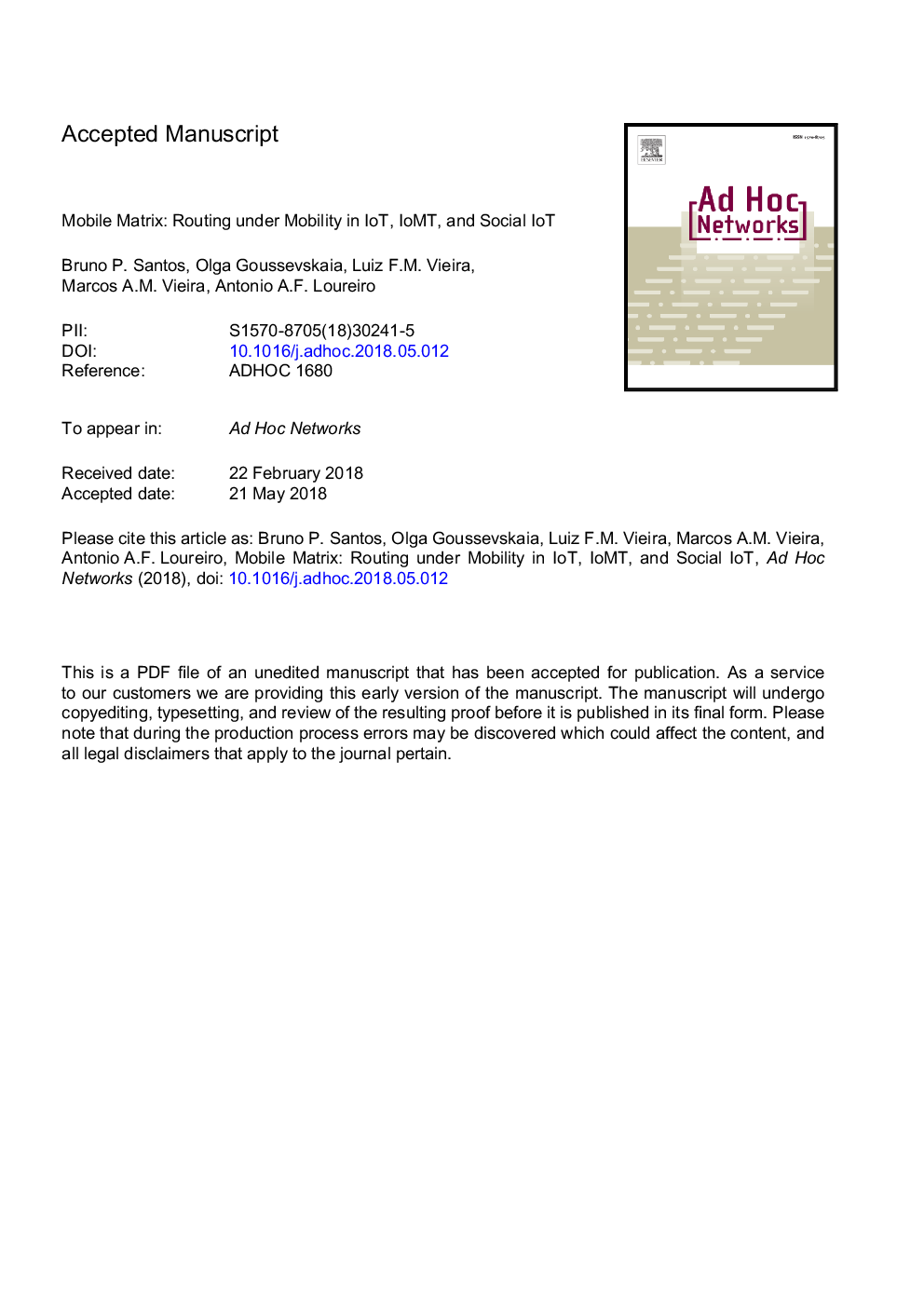| کد مقاله | کد نشریه | سال انتشار | مقاله انگلیسی | نسخه تمام متن |
|---|---|---|---|---|
| 6878437 | 1443042 | 2018 | 25 صفحه PDF | دانلود رایگان |
عنوان انگلیسی مقاله ISI
Mobile Matrix: Routing under mobility in IoT, IoMT, and Social IoT
دانلود مقاله + سفارش ترجمه
دانلود مقاله ISI انگلیسی
رایگان برای ایرانیان
کلمات کلیدی
موضوعات مرتبط
مهندسی و علوم پایه
مهندسی کامپیوتر
شبکه های کامپیوتری و ارتباطات
پیش نمایش صفحه اول مقاله

چکیده انگلیسی
The explosive growth of “things” connected to the Internet (Internet of Things, IoT) raises the question of whether existing ready-to-go networking protocols are enough to cover social and mobile IoT's demands. IoT aims to interconnect static devices attached to some physical infrastructure. However, mobility is a major factor present in everyday life, and naturally the “things” can move around (Internet of Mobile Things, IoMT) and create social ties (Social IoT, SIoT) in the cyber-physical space. In that context, we present Mobile Matrix (μMatrix), a routing protocol that uses hierarchical IPv6 address allocation to perform any-to-any routing and mobility management without changing a node's address. In this way, device mobility is transparent to the application level favoring IoMT and SIoT implementation and broader adoption. The protocol has low memory footprint, adjustable control message overhead, and it achieves optimal routing path distortion. Moreover, it does not rely on any particular hardware for mobility detection (a key open issue), such as an accelerometer. Instead, it uses a passive mechanism to detect that a device has moved. We present analytic proofs for the computational complexity and efficiency of μMatrix, as well as an evaluation of the protocol through simulations. We evaluate the protocol performance under human and non-human mobility models. For human mobility, we generated mobility traces using Group Regularity Mobility (GRM) Model, setting its parameters based on real human mobility traces. For the non-human mobility, we propose a new mobility model, to which we refer as Cyclical Random Waypoint (CRWP), where nodes move using a simple Random Waypoint and, eventually, return to their initial position. We compared μMatrix with three baseline protocols: Routing Protocol for low-power and lossy networks (RPL), Mobility Management RPL (MMRPL), and Ad hoc On-Demand Distance Vector (AODV). The results show that μMatrix and RPL offer â¯ââ¯99.9% of bottom-up delivery rate, but only μMatrix offer â¯â¥â¯95% of top-down traffic in highly dynamic and mobile scenarios, while other protocols â¯â¤â¯75%. Moreover, μMatrix uses up to 65% of the routing table while RPL and AODV fulfill theirs in all scenarios, which leads to poor top-down and any-to-any reliability.
ناشر
Database: Elsevier - ScienceDirect (ساینس دایرکت)
Journal: Ad Hoc Networks - Volume 78, September 2018, Pages 84-98
Journal: Ad Hoc Networks - Volume 78, September 2018, Pages 84-98
نویسندگان
Bruno P. Santos, Olga Goussevskaia, Luiz F.M. Vieira, Marcos A.M. Vieira, Antonio A.F. Loureiro,